BLOG - Page 18
Recently created mixtures:

Sea-Buckthorn Macerated oil
February 7, 2019

Home made air freshener
June 29, 2016

Homemade Dog-rose distillate
June 28, 2016

Homemade jasmine distillate
June 22, 2016

Moxibustion treatment with Moxa stick
May 30, 2016

Face and body gentle oil cleanser
May 26, 2016
BLOG / LATEST ADDITIONS!
Bee Pollen ☸ Ingredients ☸ Base / General
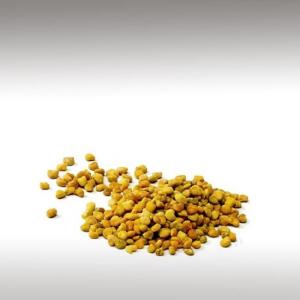

Bee Pollen comes in tiny little golden - coloured granules that are sweet to taste. It is gathered while bees visit flowers collecting nectar, some is brushed off their legs and collected when they enter the hive.
Bee Pollen contains vitamins, minerals, carbohydrates, lipids, and protein. It comes from the Pollen that collects on the bodies of bees. Bee Pollen is the Pollen ball that has been packed by worker honeybees into pellets.
The old Egyptians describe Pollen as "A Life - Giving Dust". Pollen and its nutritional value is still surrounded by mysteries. It is called the only perfectly complete food. It is one of nature’s most completely nourishing foods, with nearly all the nutrients required by humans.
Foraging bees bring pollen back to the hive, where they pass it off to other worker bees, who pack the Pollen into cells with their heads. During collection and possibly packing, the Pollen is mixed with nectar and bee salivary secretions.
The old Egyptians describe Pollen as "A Life - Giving Dust". Pollen and its nutritional value is still surrounded by mysteries. It is called the only perfectly complete food. It is one of nature’s most completely nourishing foods, with nearly all the nutrients required by humans.
Foraging bees bring pollen back to the hive, where they pass it off to other worker bees, who pack the Pollen into cells with their heads. During collection and possibly packing, the Pollen is mixed with nectar and bee salivary secretions.
Bee Pollen is the primary source of protein for the hive. When the Pollen ball is complete, a single female lays an egg on top of the pollen ball, and seals the brood cell. The term “Bee Bread” is reserved for the original Bee Pollen stored in the combs. Thus, the product cannot be called “Home Bee Bread” or fermented Pollen.
Bee Pollen was eaten only by baby bees to help them grow. These days, people can eat Bee Pollen too.
Chemical structure:
The average composition is said to be 40 - 60% simple sugars (fructose and glucose), 2 - 60% proteins, 3% minerals and vitamins, 1 - 32% fatty acids, and 5% diverse other components.
Fresh, bee collected Pollen contains about 20-30 g Water per 100 g. This high humidity is an ideal culture medium for micro-organisms like bacteria and yeast. For prevention of spoilage and for preservation of a maximum quality the Pollen has to be harvested daily and immediately placed in a freezer. After two days of storage in the freezer, the pest insects will be killed.
Self life: A microbiological and sensory point of view Pollen remains stable until 1,5 years of storage at room temperature. Under these conditions Pollen keeps its sensory and microbiological quality for a storage period of 2 years, if stored in a cool, dry and dark place. Pollen loses a considerable amount of its antioxidant activity (about 59%) after one year.
Dried Pollen stored at room temperature: 12 months;
Dried Pollen packed in vacuum: 24 months;
Frozen fresh pollenstored in the freezer: 12 months.
Bee Pollen was eaten only by baby bees to help them grow. These days, people can eat Bee Pollen too.
Chemical structure:
The average composition is said to be 40 - 60% simple sugars (fructose and glucose), 2 - 60% proteins, 3% minerals and vitamins, 1 - 32% fatty acids, and 5% diverse other components.
Fresh, bee collected Pollen contains about 20-30 g Water per 100 g. This high humidity is an ideal culture medium for micro-organisms like bacteria and yeast. For prevention of spoilage and for preservation of a maximum quality the Pollen has to be harvested daily and immediately placed in a freezer. After two days of storage in the freezer, the pest insects will be killed.
Self life: A microbiological and sensory point of view Pollen remains stable until 1,5 years of storage at room temperature. Under these conditions Pollen keeps its sensory and microbiological quality for a storage period of 2 years, if stored in a cool, dry and dark place. Pollen loses a considerable amount of its antioxidant activity (about 59%) after one year.
Dried Pollen stored at room temperature: 12 months;
Dried Pollen packed in vacuum: 24 months;
Frozen fresh pollenstored in the freezer: 12 months.
Submitted by OperaDreamhouse (March 30, 2016)
Silk Peptide Powder (Hydrolyzed Silk) ☸ Ingredients ☸ Food / Cooking
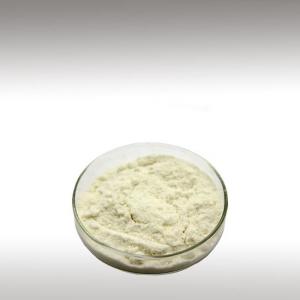

Silk Protein can be used as a food additive. It is food suplement.
Submitted by OperaDreamhouse (March 30, 2016)
Silk Peptide Powder (Hydrolyzed Silk) ☸ Ingredients ☸ Medicine / Health


Silk Proteins are easily absorbed by skin, possess perfect moisturizing properties, improve metabolism of corium and epidermis, take regulatory effect on melanin level, activate skin regeneration and promote healing of wounds, scars, possess wrinkle smoothing effect.
Silk is a natural Protein and a natural moisture management system, which is really neat.
Silk is a natural Protein and a natural moisture management system, which is really neat.
Its chemical composition is close to that of human skin and hair, meaning Silk helps damaged skin re - generate. Silk Proteins can help moisturize skin and smooth hair because hair and skin are also made of Protein and because Silk Proteins are large molecules we must have hydrolysis method.
Submitted by OperaDreamhouse (March 30, 2016)
Silk Peptide Powder (Hydrolyzed Silk) ☸ Ingredients ☸ Beauty / Cosmetics


Silk Protein, hydrolyzed will add luster, body, and manageability to hair when used in hair care preparations. As an amphoteric Protein, it is compatible with cationic, anionic, and non-ionic materials.
Another reason that Silk Proteins aren't very effective is that they won't stick to hair very well from a rinse out product (like a shampoo or a body wash.) There are special proteins (called quaternized Proteins) that are chemically modified so they'll stick to hair and skin better.
Another reason that Silk Proteins aren't very effective is that they won't stick to hair very well from a rinse out product (like a shampoo or a body wash.) There are special proteins (called quaternized Proteins) that are chemically modified so they'll stick to hair and skin better.
Submitted by OperaDreamhouse (March 30, 2016)
Hyaluronic Acid (Sodium Hyaluronate) ☸ Ingredients ☸ Medicine / Health
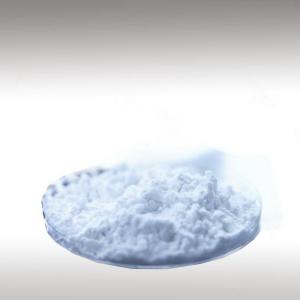

Sodium Hyaluronate is generally classified as non - toxic. Sodium Hyaluronate is also not known to be irritating skin.
Its water - binding and water - attracting attributes fill up the spaces between the connective fibers Collagen and elastin in the dermis. When injected into the face, Hyaluronic acid functions to hydrate and separate the skin, holding onto Water and supporting all that makes the face plump and voluptuous.
Its water - binding and water - attracting attributes fill up the spaces between the connective fibers Collagen and elastin in the dermis. When injected into the face, Hyaluronic acid functions to hydrate and separate the skin, holding onto Water and supporting all that makes the face plump and voluptuous.
Submitted by OperaDreamhouse (March 29, 2016)
Green Tea (Camellia Sinensis) ☸ Plants ☸ Base / General
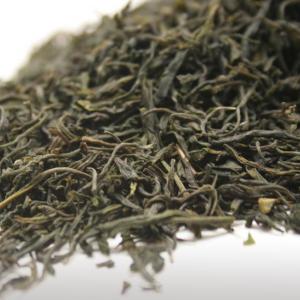

Tea tree is known by men for more than 5000 years, it is part of many legends. Tea is said to be the oldest drink in the world. It is also the second most consumed drink just behind water.
Tea consumption has its legendary origins in China dating back to more than 4,000 years ago, making it the oldest plant - based tea known. The Kissa Yojoki (Book of Tea), written by Zen priest Eisai in 1191, describes how drinking Green tea may affect five vital organs, the shapes of Tea plants, flowers and leaves, and how to grow and process Tea leaves.
Camellia Sinensis is a species of evergreen shrub or small tree whose leaves and leaf buds are used to produce tea. It is of the genus Camellia of flowering plants in the family Theaceae. White tea, Yellow tea, Green tea, Oolong, Pu-erh tea and Black tea are all harvested from one or the other, but are processed differently to attain varying levels of oxidation.
Tea plants prefer a rich and moist growing location in full to part sun. Camellia Sinensis is an evergreen shrub or small tree that is usually trimmed to below 2 m when cultivated for its leaves. It has a strong taproot. The flowers are yellow-white, 2,5 - 4 cm in diameter, with 7 to 8 petals. The leaves are 4 - 15 cm long and 2 - 5 cm broad. Fresh leaves contain about 4% caffeine, as well as related compounds including theobromine.
The Green Tea plants are grown in rows that are pruned to produce shoots in a regular manner, and in general are harvested three times per year. The first flush takes place in late April to early May. The second harvest usually takes place from June through July, and the third picking takes place in late July to early August. Sometimes, there will also be a fourth harvest. It is the first flush in the spring that brings the best - quality leaves.
Different leaf ages produce differing Tea qualities, since their chemical compositions are different. Usually, the tip (bud) and the first two to three leaves are harvested for processing. This hand picking is repeated every one to two weeks.
Green Tea originated in China, but its production has spread to many countries in Asia.
Green Tea is prepared by exposing the gathered leaves to the air until superfluous moisture is eliminated, when they are roasted over a brisk wood fire and continually stirred until they become moist and flaccid.
Tea consumption has its legendary origins in China dating back to more than 4,000 years ago, making it the oldest plant - based tea known. The Kissa Yojoki (Book of Tea), written by Zen priest Eisai in 1191, describes how drinking Green tea may affect five vital organs, the shapes of Tea plants, flowers and leaves, and how to grow and process Tea leaves.
Camellia Sinensis is a species of evergreen shrub or small tree whose leaves and leaf buds are used to produce tea. It is of the genus Camellia of flowering plants in the family Theaceae. White tea, Yellow tea, Green tea, Oolong, Pu-erh tea and Black tea are all harvested from one or the other, but are processed differently to attain varying levels of oxidation.
Tea plants prefer a rich and moist growing location in full to part sun. Camellia Sinensis is an evergreen shrub or small tree that is usually trimmed to below 2 m when cultivated for its leaves. It has a strong taproot. The flowers are yellow-white, 2,5 - 4 cm in diameter, with 7 to 8 petals. The leaves are 4 - 15 cm long and 2 - 5 cm broad. Fresh leaves contain about 4% caffeine, as well as related compounds including theobromine.
The Green Tea plants are grown in rows that are pruned to produce shoots in a regular manner, and in general are harvested three times per year. The first flush takes place in late April to early May. The second harvest usually takes place from June through July, and the third picking takes place in late July to early August. Sometimes, there will also be a fourth harvest. It is the first flush in the spring that brings the best - quality leaves.
Different leaf ages produce differing Tea qualities, since their chemical compositions are different. Usually, the tip (bud) and the first two to three leaves are harvested for processing. This hand picking is repeated every one to two weeks.
Green Tea originated in China, but its production has spread to many countries in Asia.
Green Tea is prepared by exposing the gathered leaves to the air until superfluous moisture is eliminated, when they are roasted over a brisk wood fire and continually stirred until they become moist and flaccid.
After this they pass to the rolling table, and are rolled into balls and subjected to pressure which twists them and gets rid of the moisture. They are then shaken out on flat trays, again roasted over a slow and steady charcoal fire, and kept in rapid motion for an hour to an hour and a half, till they assume a dullish green colour. After this they are winnowed, screened, and graded into different varieties.
Chinese Green Teas are traditionally pan - fired, unlike the Japanese steaming process. Other processes in China include oven - dried and sun - dried. Due to the different production process, Chinese Teas are said to have a more "Earthy" taste than Japanese Teas. Zhejiang Province is home to the most famous of all teas.
Green Tea is ubiquitous in Japan and is commonly known simply as "Tea". Tea was first used in China, and in 1191, was brought to Japan by Myoan Eisai, a Japanese Buddhist priest who also introduced the Rinzai school of Zen Buddhism.
Chinese Green Teas are traditionally pan - fired, unlike the Japanese steaming process. Other processes in China include oven - dried and sun - dried. Due to the different production process, Chinese Teas are said to have a more "Earthy" taste than Japanese Teas. Zhejiang Province is home to the most famous of all teas.
Green Tea is ubiquitous in Japan and is commonly known simply as "Tea". Tea was first used in China, and in 1191, was brought to Japan by Myoan Eisai, a Japanese Buddhist priest who also introduced the Rinzai school of Zen Buddhism.
Teas from Japan may be referred to as "Japanese Tea". Unlike Chinese Green Teas which are pan - fired, Japanese Green Teas are steamed giving them a more "vegetative" or "leafy" taste.
The best Japanese Green Tea is said to be from the Yame region of Fukuoka Prefecture and from the Uji region of Kyoto.
Submitted by OperaDreamhouse (March 24, 2016)
Hyaluronic Acid (Sodium Hyaluronate) ☸ Ingredients ☸ Base / General


Alternative Names: Hyaluronic Acid, Sodium Salt, Sodium Hyaluronate Solution, Sodium Salt Hyaluronic Acid, Healon, Hyalurone Sodium.
Sodium hyaluronate is the Sodium Salt of hyaluronic Acid. Hyaluronic Acid is found naturally in the fluid that bathes joints, in the vitreous humor of the eye and in the skin. Sodium Hyaluronate has a smaller molecular size than hyaluronic Acid, causing it to easily penetrate the skin's surface, and is able to retain a relatively large amount of Water - up to 1,000 its own weight. This means it can penetrate to lower layers of the skin, attract and retain Water, and promote nutrient absorption.
The magic of this ingredient lies in its ability to retain moisture. It’s considered to have a greater capacity to hold moisture than any other natural or synthetic polymer. In fact, one gram of Hyaluronic Acid is able to hold up to six liters of Water.
Hyaluronic Acid in the past was primarily derived from rooster combs, but given the increasing concern about animal derived ingredients, a method was developed in 1989 to extract Hyaluronic Acid from vegetable sources such as soybean or corn, using afermentation process involving bacteria. Bacteriais used in fermenting many products such as wine, beer, cheese, yoghurt and even the leavening of breed. This process creates a very high quality Hyaluronic Acid.
Hyaluronic Acid is a macromolecule and it can be detected only within living organisms. Hyaluronic Acid is soluble in Water.
Sodium Hyaluronate is available in various molecular weights, having different costs. The lower the molecular weight, the merrier are the chances the Hyaluronic Acid molecules penetrate the derma. The lower the molecular weight, more expensive is its price and less it moisturizes the skin. This is also why the low molecular version of Sodium Hyaluronate is usually used in synergy with the high molecular weight of Sodium Hyaluronate.
In addition to seeing Hyaluronic Acid listed as an ingredient in products, you’ve probably also seen the similarly named sodium hyaluronate. There indeed is a connection. Chemically, sodium Hyaluronate is a Salt derived from Hyaluronic Acid and it has unique advantages for skin in comparison to “regular” Hyaluronic Acid.
Sodium Hyaluronate main strength lies in its molecular size. During the process of creating Sodium Hyaluronate, its molecular weight decreases due to the removal of lipids, proteins, and nucleic acids. Removing these compounds makes the Sodium Hyaluronate molecule much smaller than that of Hyaluronic Acid. That means that the sodium hyaluronate, when applied topically, can penetrate the skin more easily than the Hyaluronic Acid, which makes the Sodium Hyaluronate an asset in skincare products.
The magic of this ingredient lies in its ability to retain moisture. It’s considered to have a greater capacity to hold moisture than any other natural or synthetic polymer. In fact, one gram of Hyaluronic Acid is able to hold up to six liters of Water.
Hyaluronic Acid in the past was primarily derived from rooster combs, but given the increasing concern about animal derived ingredients, a method was developed in 1989 to extract Hyaluronic Acid from vegetable sources such as soybean or corn, using afermentation process involving bacteria. Bacteriais used in fermenting many products such as wine, beer, cheese, yoghurt and even the leavening of breed. This process creates a very high quality Hyaluronic Acid.
Hyaluronic Acid is a macromolecule and it can be detected only within living organisms. Hyaluronic Acid is soluble in Water.
Sodium Hyaluronate is available in various molecular weights, having different costs. The lower the molecular weight, the merrier are the chances the Hyaluronic Acid molecules penetrate the derma. The lower the molecular weight, more expensive is its price and less it moisturizes the skin. This is also why the low molecular version of Sodium Hyaluronate is usually used in synergy with the high molecular weight of Sodium Hyaluronate.
In addition to seeing Hyaluronic Acid listed as an ingredient in products, you’ve probably also seen the similarly named sodium hyaluronate. There indeed is a connection. Chemically, sodium Hyaluronate is a Salt derived from Hyaluronic Acid and it has unique advantages for skin in comparison to “regular” Hyaluronic Acid.
Sodium Hyaluronate main strength lies in its molecular size. During the process of creating Sodium Hyaluronate, its molecular weight decreases due to the removal of lipids, proteins, and nucleic acids. Removing these compounds makes the Sodium Hyaluronate molecule much smaller than that of Hyaluronic Acid. That means that the sodium hyaluronate, when applied topically, can penetrate the skin more easily than the Hyaluronic Acid, which makes the Sodium Hyaluronate an asset in skincare products.
Submitted by OperaDreamhouse (March 11, 2016)
Wintergreen Essential Oil (Gaultheria Fragrantissima) ☸ Essential oils ☸ Spiritual Practises
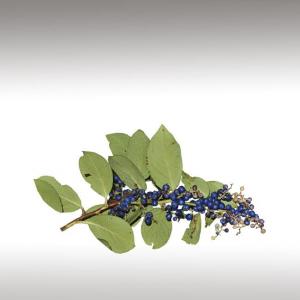

The strong aroma of Wintergreen essential oil improves attentiveness and stimulates the mind. Applying this oil to your skin is said to heighten the vibration of the body and accentuate sound.
Increased vibration helps in unveiling spiritual awareness and paves way to the harmony of self and divinity. This attribute has made Wintergreen oil to be an incredible part of the ancient chants (Mantras) and meditations where sound was used for adding spiritualstrength.
Can indicate that you have been hurt in relationships. You have been left or emotionally or mentally battered. It is time for you to heal the hurt and get on with your life. It is time to love again. Wintergreen balances the Heart chakra.
Increased vibration helps in unveiling spiritual awareness and paves way to the harmony of self and divinity. This attribute has made Wintergreen oil to be an incredible part of the ancient chants (Mantras) and meditations where sound was used for adding spiritualstrength.
Can indicate that you have been hurt in relationships. You have been left or emotionally or mentally battered. It is time for you to heal the hurt and get on with your life. It is time to love again. Wintergreen balances the Heart chakra.
Submitted by OperaDreamhouse (February 15, 2016)
Wintergreen Essential Oil (Gaultheria Fragrantissima) ☸ Essential oils ☸ Beauty / Cosmetics


Wintergreen essential oil used in some perfumery applications especially in forest type fragrances.
Submitted by OperaDreamhouse (February 15, 2016)
Wintergreen Essential Oil (Gaultheria Fragrantissima) ☸ Essential oils ☸ Base / General


Botanical Name: Gaultheria fragrantissima
Botanical Origin: Nepal
Common Method of Extraction: Steam distillation
Part Typically Used: Leaves / Tops
Color: Pale yellow or yellowish or pinkish
Consistency: Thin
Perfumery Note: Top / Middle
Shelf Life: 7+ years
Strength of Initial Aroma: Wintgergreen (leaf) oil has a sweet, minty aroma with slight birch tones. Strongly aromatic with a sweet characteristic odor, displaying a peculiar creamy-fruity top note and a sweet-woody dry out.
Blends Well With: Lavender, Lime, Orange, Peppermint, Rosemary, Clove, Tea Tree, Sweet Anise, Nutmeg essential oil.
Common name :
French:Thé des bois, gaulthérie odorante
Chemical structure: Essential oil of gaultheria is composed of nearly 99% methyl salicylate. It is thus one of the rare essential oils to be almost mononuclear.
Gaultheria is a small shrub less than fifteen centimetres tall of the Ericaceae family, which grows in the forests of Nepal (Gaultheria fragrantissima syn. Punctata) as well as in China.
An evergreen herb growing up to 5-6 m high with slender creeping stems producing leathery leaves, white flowers, and red berries. Wall which is collected from 1200-2600m on rocky hill sides in forested areas of Nepal. The fresh twigs and leaves are very aromatic.
Gaultheria is nowadays mainly harvested in Nepal, in the Himalayas. In this country, the plant is taller and easier to harvest than in North America where this back - breaking work which was reserved in the past for Indians, immigrant children and women, no longer attracts many volunteers.
Essential oil of Gaultheria is extracted from the leaves, which are soaked overnight in hot water to obtain methyl salicylate by enzymatic fermentation, and they are then distilled with steam. This fermentation releases the aromatic compound from its bond to complex sugars which are too heavy to be distilled by the steam.
The yield is of 1.5% to 2%, one hundred kilograms of leaves give a litre and a half of essential oil.
Gaultheria fragrantissima wallich is indigenous to India and the Indian Wintergreen essential oil has similar therapeutic properties just as the American Wintergreen essential oil.
Ayurveda, the ancient natural science of healing calls this herb as Gandapura and was used in many spiritual ceremonies where this sacred plant was trusted to bring harmony between earth and its inhabitants through its healing powers.
Organoleptic properties of Wintergreen oil were detected by expert nose and eyes. Appearance of oil was determined by eyes and aroma by nose.
Botanical Origin: Nepal
Common Method of Extraction: Steam distillation
Part Typically Used: Leaves / Tops
Color: Pale yellow or yellowish or pinkish
Consistency: Thin
Perfumery Note: Top / Middle
Shelf Life: 7+ years
Strength of Initial Aroma: Wintgergreen (leaf) oil has a sweet, minty aroma with slight birch tones. Strongly aromatic with a sweet characteristic odor, displaying a peculiar creamy-fruity top note and a sweet-woody dry out.
Blends Well With: Lavender, Lime, Orange, Peppermint, Rosemary, Clove, Tea Tree, Sweet Anise, Nutmeg essential oil.
Common name :
French:Thé des bois, gaulthérie odorante
Chemical structure: Essential oil of gaultheria is composed of nearly 99% methyl salicylate. It is thus one of the rare essential oils to be almost mononuclear.
Gaultheria is a small shrub less than fifteen centimetres tall of the Ericaceae family, which grows in the forests of Nepal (Gaultheria fragrantissima syn. Punctata) as well as in China.
An evergreen herb growing up to 5-6 m high with slender creeping stems producing leathery leaves, white flowers, and red berries. Wall which is collected from 1200-2600m on rocky hill sides in forested areas of Nepal. The fresh twigs and leaves are very aromatic.
Gaultheria is nowadays mainly harvested in Nepal, in the Himalayas. In this country, the plant is taller and easier to harvest than in North America where this back - breaking work which was reserved in the past for Indians, immigrant children and women, no longer attracts many volunteers.
Essential oil of Gaultheria is extracted from the leaves, which are soaked overnight in hot water to obtain methyl salicylate by enzymatic fermentation, and they are then distilled with steam. This fermentation releases the aromatic compound from its bond to complex sugars which are too heavy to be distilled by the steam.
The yield is of 1.5% to 2%, one hundred kilograms of leaves give a litre and a half of essential oil.
Gaultheria fragrantissima wallich is indigenous to India and the Indian Wintergreen essential oil has similar therapeutic properties just as the American Wintergreen essential oil.
Ayurveda, the ancient natural science of healing calls this herb as Gandapura and was used in many spiritual ceremonies where this sacred plant was trusted to bring harmony between earth and its inhabitants through its healing powers.
Organoleptic properties of Wintergreen oil were detected by expert nose and eyes. Appearance of oil was determined by eyes and aroma by nose.
Submitted by OperaDreamhouse (January 27, 2016)
Wintergreen Essential Oil (Gaultheria Fragrantissima) ☸ Essential oils ☸ Medicine / Health


Therapeutic Properties :
Analgesic
Astringent
Carminative
Diuretic
Stimulant
Anodyne
Anti-rheumatic
Antispasmodic
Pregnancy / Lactation : Avoid if pregnant. Should be avoided in pregnancy and lactation.
Children: It is safest to consult a qualified aromatherapy practitioner before using oils with children. Use extreme caution when using essential oils with children and give children only the gentlest oils at extremely low doses. Avoid topical use on children under 7 years.
Wintergreen essential oil is used as a counterirritant in treating pain, sores, muscular pains, lower back pain, achy joints and inflammation, where counterirritants act by creating an irritable sensation that lessens swelling and pain in the tissues.
The analgesic, relaxant and anodyne properties of this oil cause numbness and warmth when applied on the painful area. It eliminates pain, reduce stress, drive away tension and induce good sleep by inhibiting the formation of prostaglandins responsible for causing pain. This is mainly due to the presence ofMethyl salicyclate which is equivalent to the conventional medicine Aspirin (the fundamental component of Aspirin is salicyclate).
Analgesic
Astringent
Carminative
Diuretic
Stimulant
Anodyne
Anti-rheumatic
Antispasmodic
Antiseptic
Aromatic
Emmenagogue
Contraindications : Use in small doses. Do not use if you are allergic to aspirin. If you are pregnant, epileptic, have liver damage, have cancer, or have any other medical problem, use essential oils only under the proper guidance of a qualified aromatherapy practitioner.
Aromatic
Emmenagogue
Contraindications : Use in small doses. Do not use if you are allergic to aspirin. If you are pregnant, epileptic, have liver damage, have cancer, or have any other medical problem, use essential oils only under the proper guidance of a qualified aromatherapy practitioner.
Ingesting Wintergreen essential oil should be strictly avoided as it is highly toxic and can cause serious health effects. 1 fl oz of this oil is equivalent to 171 adult aspirin tablets. Use it only as a topical application after diluting it with soothing carrier oils in 1:10 ratio. This oil has blood - thinning effects and should be avoided by people who are susceptible to aspirin.
Pregnancy / Lactation : Avoid if pregnant. Should be avoided in pregnancy and lactation.
Children: It is safest to consult a qualified aromatherapy practitioner before using oils with children. Use extreme caution when using essential oils with children and give children only the gentlest oils at extremely low doses. Avoid topical use on children under 7 years.
Wintergreen essential oil is used as a counterirritant in treating pain, sores, muscular pains, lower back pain, achy joints and inflammation, where counterirritants act by creating an irritable sensation that lessens swelling and pain in the tissues.
The analgesic, relaxant and anodyne properties of this oil cause numbness and warmth when applied on the painful area. It eliminates pain, reduce stress, drive away tension and induce good sleep by inhibiting the formation of prostaglandins responsible for causing pain. This is mainly due to the presence ofMethyl salicyclate which is equivalent to the conventional medicine Aspirin (the fundamental component of Aspirin is salicyclate).
Submitted by OperaDreamhouse (January 27, 2016)
Cypriol (Nagarmotha) Essential Oil (Cyperus Scariosus) ☸ Essential oils ☸ Base / General
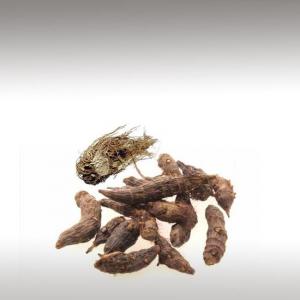

Botanical Name: Cyperus scariosus
Common Method of Extraction: Steam distillation
Part Typically Used: Dried roots (Rhizomes)
Color: Dark brown can change color to a transparent green
Consistency: Thick
Perfumery Note: Base / Middle
Shelf Life: 2-3 years
Strength of Initial Aroma: Strong, Woody, leathery, slightly sweet and spicy, earthy, similar notes of Vetiver and Agarwood (Oud).
Blends Well With: Bergamot, Black Pepper, Cassia, Cedarwood Atlantic, Cedarwood Himalayan, Cinnamon Leaf, Clary Sage, Geranium, Grapefruit Pink, Jasmine grand, Jasmine sambac, May Chang, Myrrh, Neroli, Orange Sweet, Osmanthus, Patchouli, Rose Moroc, Sandalwood, Tangerine, Vanilla, Labdanum, Ylang Ylang essetial oils.
Common name :
Sanskrit- Nagar musta
Hindi - Nagar motha
Chinese - Xiang Fu , Shacao
Chemical structure:
Steam distillation of the tubers of Cypriol yields 0.075–0.080% of an essential oil, the principal content of which is cyperene.
The major chemical components of this herb are essential oils, flavonoids, terpenoids, sesquiterpenes, cyprotene, cyperene, aselinene, rotundene, valencene, cyperol, gurjunene, trans-calamenene, cadalene, cyperotundone, mustakone, isocyperol, acyperone.
Nagarmotha (Cyperus rotundus), a cosmopolitan weed, is found in all tropical, subtropical and temperate regions of the world. In India, it is commonly known as Nagarmotha and it belongs to the family Cyperacea.
This oil is famous even today in many parts of India as a renowned perfume for scenting saris and other traditional outfits. It has been in use in the production of perfumes, attars, incense sticks, soaps, compounds, hair treatments and in flavoring tobacco products.
Cypriol is an herbaceous plant with morphology similar to papyrus plants, as both plants are members of the Cyperus genus. The erect, angular stems bear short, slender, brilliant-green leaves. The aromatic rhizomes form a dense root system. The plants grow in riverbeds in India's Madhya Pradesh state.
To produce the essential oil, the roots and rhizomes are harvested from April to June by members of neighboring tribes. The raw material is collected in the villages and transported to the production plant.
Common Method of Extraction: Steam distillation
Part Typically Used: Dried roots (Rhizomes)
Color: Dark brown can change color to a transparent green
Consistency: Thick
Perfumery Note: Base / Middle
Shelf Life: 2-3 years
Strength of Initial Aroma: Strong, Woody, leathery, slightly sweet and spicy, earthy, similar notes of Vetiver and Agarwood (Oud).
Blends Well With: Bergamot, Black Pepper, Cassia, Cedarwood Atlantic, Cedarwood Himalayan, Cinnamon Leaf, Clary Sage, Geranium, Grapefruit Pink, Jasmine grand, Jasmine sambac, May Chang, Myrrh, Neroli, Orange Sweet, Osmanthus, Patchouli, Rose Moroc, Sandalwood, Tangerine, Vanilla, Labdanum, Ylang Ylang essetial oils.
Common name :
Sanskrit- Nagar musta
Hindi - Nagar motha
Chinese - Xiang Fu , Shacao
Chemical structure:
Steam distillation of the tubers of Cypriol yields 0.075–0.080% of an essential oil, the principal content of which is cyperene.
The major chemical components of this herb are essential oils, flavonoids, terpenoids, sesquiterpenes, cyprotene, cyperene, aselinene, rotundene, valencene, cyperol, gurjunene, trans-calamenene, cadalene, cyperotundone, mustakone, isocyperol, acyperone.
Nagarmotha (Cyperus rotundus), a cosmopolitan weed, is found in all tropical, subtropical and temperate regions of the world. In India, it is commonly known as Nagarmotha and it belongs to the family Cyperacea.
This oil is famous even today in many parts of India as a renowned perfume for scenting saris and other traditional outfits. It has been in use in the production of perfumes, attars, incense sticks, soaps, compounds, hair treatments and in flavoring tobacco products.
Cypriol is an herbaceous plant with morphology similar to papyrus plants, as both plants are members of the Cyperus genus. The erect, angular stems bear short, slender, brilliant-green leaves. The aromatic rhizomes form a dense root system. The plants grow in riverbeds in India's Madhya Pradesh state.
To produce the essential oil, the roots and rhizomes are harvested from April to June by members of neighboring tribes. The raw material is collected in the villages and transported to the production plant.
Submitted by OperaDreamhouse (January 19, 2016)
Cypriol (Nagarmotha) Essential Oil (Cyperus Scariosus) ☸ Essential oils ☸ Medicine / Health


Therapeutic Properties :
Anti-inflammatory
Anti-anxiety
Decongestant
Digestive tonic
Improve circulation
Menstrual cramps
Nervousness
Contraindications : Do not take essential oils internally. Always remember to dilute essential oils in suitable carrier oils before using it topically as pure and organic essential oils are highly concentrated liquids. Avoid using Nagarmotha essential oil on children and epileptics.
Pregnancy / Lactation : No formal testing, avoid in pregnancy and lactation.
The essential oil steam distilled from the rhizomes of this plant has been documented for treating numerous health conditions ranging from Hepatitis B to stress relateddegenerative diseases.
Using 4 drops of Nagarmotha essential oil in warm bathing water helps in calming down a nervous stomach, check weight gain, discard toxins from the body, reduces rheumatic pain and treats inflammation and anorexia.
Modern alternative medicine recommends using the plant to treat nausea, fever and inflammation; for pain reduction: for muscle relaxation and many other disorders.
Helps in reducing respiratory congestion, cough, bronco-pulmonary congestion, bronchitis, loosening the mucus and phlegm deposits and comforts the digestive system.
The diuretic properties of this oil also help in eliminating the toxic substances from the body through sweat and urine, making it useful in reducing inflammation as well.
Gently massaging the painful areas can help in treating dysmennorhea and rheumatoid arthritis.
Nagarmotha oil acts as a tonic for the nervous system and influences the regular functioning of the body.
Popularly known as a qi-in-blood medicine in China, Nagarmotha is trusted to penetrate the blood stream and treat irregular menstruation, dysmennorhea or menstrual pain, overdue periods and depression in women mainly during menstruation.
The essential oil of Nagarmotha is illustrated in Ayurveda as a natural enhancer of the biological fire and is an effective digestive aid. Ayurveda illustrates Nagarmotha as a detoxifying herb and as the best ama-pachaka (eliminator of endo-toxins).
Nagarmotha essential oil is known to pacify Pitta and Kapha energies.
Anti-inflammatory
Anti-anxiety
Decongestant
Digestive tonic
Improve circulation
Menstrual cramps
Nervousness
Contraindications : Do not take essential oils internally. Always remember to dilute essential oils in suitable carrier oils before using it topically as pure and organic essential oils are highly concentrated liquids. Avoid using Nagarmotha essential oil on children and epileptics.
Pregnancy / Lactation : No formal testing, avoid in pregnancy and lactation.
The essential oil steam distilled from the rhizomes of this plant has been documented for treating numerous health conditions ranging from Hepatitis B to stress relateddegenerative diseases.
Using 4 drops of Nagarmotha essential oil in warm bathing water helps in calming down a nervous stomach, check weight gain, discard toxins from the body, reduces rheumatic pain and treats inflammation and anorexia.
Modern alternative medicine recommends using the plant to treat nausea, fever and inflammation; for pain reduction: for muscle relaxation and many other disorders.
Helps in reducing respiratory congestion, cough, bronco-pulmonary congestion, bronchitis, loosening the mucus and phlegm deposits and comforts the digestive system.
The diuretic properties of this oil also help in eliminating the toxic substances from the body through sweat and urine, making it useful in reducing inflammation as well.
Gently massaging the painful areas can help in treating dysmennorhea and rheumatoid arthritis.
Nagarmotha oil acts as a tonic for the nervous system and influences the regular functioning of the body.
Popularly known as a qi-in-blood medicine in China, Nagarmotha is trusted to penetrate the blood stream and treat irregular menstruation, dysmennorhea or menstrual pain, overdue periods and depression in women mainly during menstruation.
The essential oil of Nagarmotha is illustrated in Ayurveda as a natural enhancer of the biological fire and is an effective digestive aid. Ayurveda illustrates Nagarmotha as a detoxifying herb and as the best ama-pachaka (eliminator of endo-toxins).
Nagarmotha essential oil is known to pacify Pitta and Kapha energies.
Submitted by OperaDreamhouse (January 19, 2016)
Zanthoxylum Essential Oil (Zanthoxylum Armatum) ☸ Essential oils ☸ Spiritual Practises
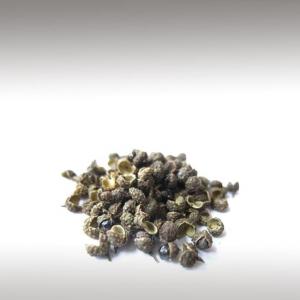
 An exquisite oil that assists meditation and is very soothing to the nerves.
An exquisite oil that assists meditation and is very soothing to the nerves.Submitted by OperaDreamhouse (January 18, 2016)
Zanthoxylum Essential Oil (Zanthoxylum Armatum) ☸ Essential oils ☸ Base / General


Botanical Name: Zanthoxylum armatum
Common Method of Extraction: Steam distillation
Part Typically Used: Dried Fruit (Berries) / Leafs
Color: Pale yellow to reddish brown
Consistency: Fluid liquid
Perfumery Note: Middle
Shelf Life: 4-5 years
Strength of Initial Aroma: Fruity, fresh, spicy, alluring, sensual, balsamic, earthy, exotic, slightly bitter, slightly spicy, strong
Blends Well With: Rosalina, Ambrette, Black Pepper, Balsam of Peru, Ylang-Ylang, Lavender , Ambrette, Black Spruce, Blood Orange, Buddha Wood, Cedarwood Himalayan, Clary Sage, Copaiba Balsam, Elemi, Geranium, Jasmine sambac, Lotus Pink, Neroli, Siam Wood essantial oils, Rose absolute, Sandalwood absoliute.
Common (Indian) name:
Hindi - Darmar, nepali dh
aniya, tejphal, tumuru
Bengali - Gaira, tambul,
Oriya - Tundopoda
Sanskrit - Tumburu, dhiva, gandhalu.
Zanthoxylum essential oil for its strong and spicy smell widely used in food products aromatisation.
Timur fruits are used as spices, condiments, medicine and as flavoring agents for soups and many other conventional dishes.
This plant is a shrub or a small tree, 6 meter tall or more, with dense foliage, found in the hot valleys of the Himalayas at altitudes of 1,000 to 2100 m. The dried fruits collected from the wild or cultivated fields, are dried before steam distillation, yielding an essential oil (c. 22,3%).
Zanthoxylum armatum DC found in the hot valleys of the Himalayas from Jammu to Bhutan at altitudes of 1,000-2100 m and in Eastern Ghats in Orissa and Andhra Pradesh at 1,200 m., in India. It is also sometimes planted for hedges in Assam.
Common Method of Extraction: Steam distillation
Part Typically Used: Dried Fruit (Berries) / Leafs
Color: Pale yellow to reddish brown
Consistency: Fluid liquid
Perfumery Note: Middle
Shelf Life: 4-5 years
Strength of Initial Aroma: Fruity, fresh, spicy, alluring, sensual, balsamic, earthy, exotic, slightly bitter, slightly spicy, strong
Blends Well With: Rosalina, Ambrette, Black Pepper, Balsam of Peru, Ylang-Ylang, Lavender , Ambrette, Black Spruce, Blood Orange, Buddha Wood, Cedarwood Himalayan, Clary Sage, Copaiba Balsam, Elemi, Geranium, Jasmine sambac, Lotus Pink, Neroli, Siam Wood essantial oils, Rose absolute, Sandalwood absoliute.
Common (Indian) name:
Hindi - Darmar, nepali dh
aniya, tejphal, tumuru
Bengali - Gaira, tambul,
Oriya - Tundopoda
Sanskrit - Tumburu, dhiva, gandhalu.
Zanthoxylum essential oil for its strong and spicy smell widely used in food products aromatisation.
Timur fruits are used as spices, condiments, medicine and as flavoring agents for soups and many other conventional dishes.
This plant is a shrub or a small tree, 6 meter tall or more, with dense foliage, found in the hot valleys of the Himalayas at altitudes of 1,000 to 2100 m. The dried fruits collected from the wild or cultivated fields, are dried before steam distillation, yielding an essential oil (c. 22,3%).
Zanthoxylum armatum DC found in the hot valleys of the Himalayas from Jammu to Bhutan at altitudes of 1,000-2100 m and in Eastern Ghats in Orissa and Andhra Pradesh at 1,200 m., in India. It is also sometimes planted for hedges in Assam.
Submitted by OperaDreamhouse (January 12, 2016)
Page 18 of 48

